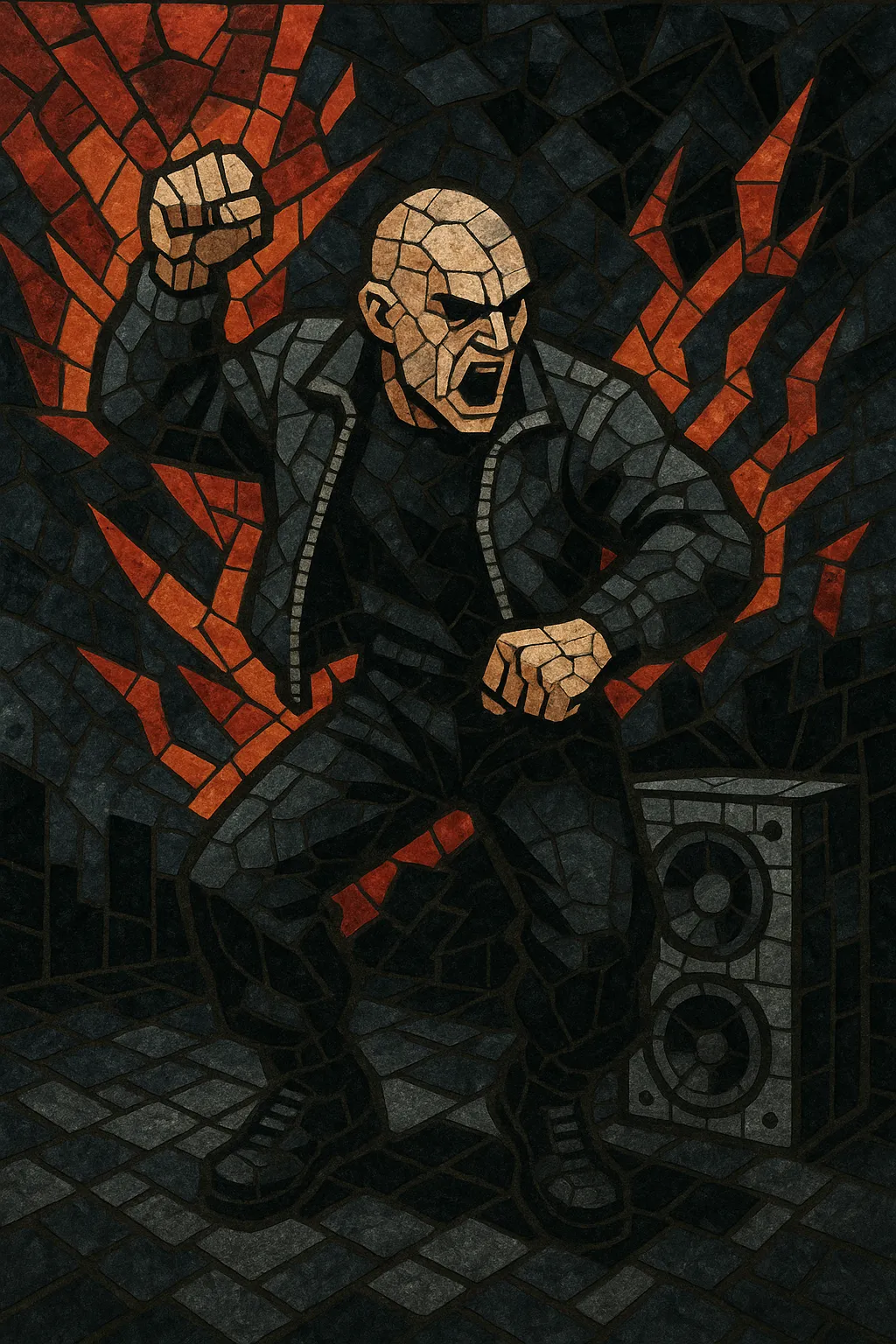Gabber is a Dutch-born branch of hardcore techno characterized by extremely fast tempos, relentless 4/4 kicks, and an aggressive, distorted sound palette.
It typically runs between 160–190+ BPM, features heavily overdriven 909-style kick drums that also serve as the bass, terse minor-key synth stabs (including classic "hoover" timbres), and short, shouted vocal samples or MC hype.
Culturally, gabber is tied to early-’90s Rotterdam club culture, Thunderdome compilations and events, bomber jackets and trainers, and the high-energy hakken dance.
The aesthetic is raw, industrial, and maximal, prioritizing impact, speed, and dancefloor intensity over harmonic complexity.
Gabber emerged in the Netherlands—especially Rotterdam—when local DJs and producers pushed the harder edges of techno and Belgian new beat. Early rave culture, EBM, industrial timbres, and acid house techniques shaped its sonic DNA. Clubs like Parkzicht became crucibles where faster tempos and overdriven kick drums evolved into a distinct style.
By the early 1990s, the sound coalesced around pounding 4/4 beats at 160–190 BPM with distorted 909 kicks, terse hoover stabs, and aggressive sampling. Labels such as Rotterdam Records and Mokum Records, and large-scale events and compilations by ID&T (notably Thunderdome starting in 1993), broadcast the sound internationally. Dutch acts and German collaborators (e.g., the PCP camp) helped standardize the production approach and performance culture.
As gabber gained visibility, some producers leaned toward more anthemic or melodic tracks, sparking happy hardcore’s rise and causing debates within the scene about authenticity. While the core gabber sound remained uncompromising, parts of the audience and industry shifted toward friendlier, pop-leaning offshoots, leading to cycles of underground consolidation and commercial peaks.
Around the 2000s, “nu-style gabber” and harder, more polished Dutch hardcore bridged toward hardstyle. Parallel lineages branched into terrorcore, speedcore, and Frenchcore, while the classic Rotterdam aesthetic maintained a devoted base. Festivals like Masters of Hardcore and Dominator, alongside new generations of producers, sustained the genre’s relevance. Modern “uptempo” strains and crossovers with industrial hardcore keep the sound fresh while honoring gabber’s original, high-impact ethos.


